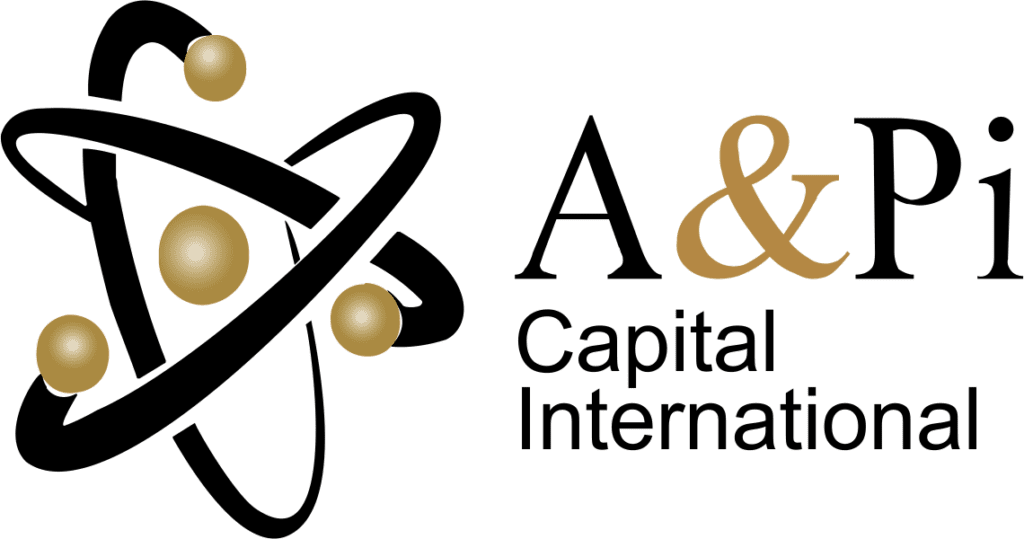Official Gazette No. 6,835 Extraordinary, dated September 3, 2024, includes Sudeaseg’s updated regulations for the certification of technical reserves, actuarial guidelines for insurance premiums, and external actuarial audits, introducing significant changes to actuarial practices within the insurance sector.
The aim is to ensure that actuarial practices across the industry remain rigorous and transparent, bolstering market stability.
These regulations are formalized in Administrative Decree SAA-01-0505-2024, issued on August 29, 2024, and took effect from the date of publication in the Official Gazette.
The key areas of focus for actuarial certifications required from actuaries are as follows:
- Certification of Technical Reserves: Actuaries must certify that the insurance companies’ technical reserves comply with the current regulatory framework, incorporating adequate projections that are properly adjusted to the risks assessed.
- Actuarial Guidelines for Insurance Premiums: The regulations mandate the establishment of comprehensive actuarial guidelines for insurance premiums, including prepaid medical insurance, ensuring that pricing accurately reflects assumed risk and is financially sustainable.
- External Actuarial Audits: External actuarial audits must be conducted by independent professionals or firms to verify the precision and regulatory compliance of the actuarial models used.
A Detailed Explanation of Each Aspect Mentioned:
- Certification of Technical Reserves
- Concept: Technical reserves represent the funds that insurance companies must maintain to fulfill their future obligations to policyholders. These reserves are calculated based on various risk projections, including the likelihood of insured events occurring and the potential magnitude of claims.
- Role of the Actuary: Actuaries are responsible for certifying that the methods and models used to calculate these reserves comply with regulatory and actuarial standards. This involves assessing and documenting the adequacy of reserves to cover current and future liabilities, using rigorous statistical and financial analyses.
- Importance: This certification helps safeguard the financial stability of insurers, ensuring they have adequate funds to pay claims and minimizing the risk of insolvency.
Technical reserves encompass the following specific types:
a. Unearned Premium Reserve (UPR)
- Definition: This reserve corresponds to the funds insurers must hold to cover future claims and associated costs for policies in force, until the coverage period ends.
- Purpose: To ensure that risks assumed under current policies can be adequately managed without compromising the insurer’s solvency.
b. Reserve for Incurred But Not Paid Claims (IBNPC)
Includes:
- Reported But Not Paid Claims Reserve (RBNP): Covers claims that have been reported to the insurer but are still unpaid.
- Incurred But Not Reported Reserve (IBNR): Allocates funds for claims that have occurred but have not yet been reported to the company.
- Purpose: To ensure the insurer has sufficient resources to meet outstanding or unreported claims.
c. Catastrophe Reserve
- Definition: A reserve set aside to protect against unexpected fluctuations in claim frequency or severity, particularly relevant for lines with high variability.
- Use: To help maintain financial stability in the event of a sudden increase in claims or costs.
d. Premium Deficiency Reserve (PDR)
- Definition: Additional funds that must be maintained when collected premiums are insufficient to cover future expected costs, including claims and expenses.
- Purpose: To ensure premiums adequately cover assumed risks, avoiding financial shortfalls.
e. Mathematical Reserve
- Application: Specifically for life insurance and similar products, requiring funds to meet future obligations based on long-term contract calculations.
- Purpose: To cover the insurer’s guaranteed commitments over the policy’s duration.
f. Reserves for Additional and Supplementary Benefits
- Description: Includes reserves for supplementary coverage, such as health benefits, disability, or other add-ons.
- Importance: To ensure these additional benefits are financially backed.
SPECIAL RESERVES: Exchange Rate Fluctuations and Bond Fund Reserves
Under the new Sudeaseg 2024 regulations, it is not explicitly stated whether reserves for Exchange Rate Fluctuations and the Bond Fund fall under the same certification rules as traditional technical reserves. However, these reserves have unique characteristics that require careful analysis to ensure proper management and regulatory compliance.
a. Exchange Rate Fluctuation Reserve
Although not formally categorized as a certifiable technical reserve, this reserve plays a vital role in the financial stability of insurance companies. It is designed to mitigate the impact of exchange rate variations between the Bolívar and foreign currencies, such as the US dollar. Sudeaseg regulations emphasize that certifiable reserves must comply with standard actuarial methodologies and be subject to audits; however, the exchange rate fluctuation reserve requires special attention due to its direct influence on financial outcomes.
Purpose and Application
This reserve serves as an accounting mechanism to protect insurance companies from foreign exchange risk exposure in transactions and obligations denominated in foreign currencies. It is particularly significant for operations such as claims payouts or premium management when these are tied to fluctuating exchange rates.
Classification and Regulation
This reserve impacts both technical and financial reserves. Regulations mandate its proper recording within the accounting and actuarial frameworks defined by Sudeaseg. Periodic evaluations of its adequacy are required to ensure the solvency and stability of insurers, aligned with international best practices.
Significance of the Exchange Rate Fluctuation Reserve
Among the two reserves, the exchange rate fluctuation reserve deserves special attention due to its impact on insurers’ financial stability. For example, during significant devaluations, this reserve can absorb losses arising from the difference between liabilities in bolívares and assets denominated in US dollars. This is crucial for maintaining the insurer’s ability to meet its obligations, especially in volatile economic environments like Venezuela.
Numerical Example
An insurance company has obligations denominated in US dollars amounting to $5 million and equivalent assets in bolívares at an exchange rate of 50 bolívares per dollar (totaling Bs. 250 million). If the exchange rate devalues to 70 bolívares per dollar, the liability in bolívares increases to Bs. 350 million, creating a gap of Bs. 100 million. The exchange rate fluctuation reserve would cover this difference, protecting the insurer’s financial statements.
b. Bond Fund Reserve
This reserve may be subject to specific conditions derived from bond contract requirements. According to the regulations, general and specific terms for bonds must align with certain regulatory guidelines. However, it is not explicitly stated whether this reserve falls entirely under standard actuarial certification requirements.
Purpose and Application
The bond fund reserve aims to ensure the insurer’s capacity to meet obligations arising from bond contracts. While there is no explicit mention of a formal actuarial certification requirement, the regulation underscores the importance of managing this reserve with technical rigor and adequate oversight.
2. Actuarial Guidelines for Insurance Premiums
- Scope: The regulations mandate insurers to develop and implement specific actuarial guidelines for pricing insurance products, including general insurance and prepaid medical plans.
- Role of the Actuary: Actuaries must design and document criteria used to calculate premiums, ensuring they are fair and based on an accurate risk assessment. This includes selecting relevant historical data and applying statistical risk models to ensure rates are adequate and not overly burdensome for policyholders.
- Justification: This approach ensures premiums charged are proportional to the insured risk, promoting fairness and sustainability in the insurance market.
These new requirements aim to strengthen the transparency and robustness of the insurance system, protecting both insurers and policyholders from potential financial imbalances.
3. External Actuarial Audits
- Description: External actuarial audits are independent reviews that assess the validity of actuarial calculations performed by insurance companies. These audits must be conducted by external actuaries or consulting firms that have no conflicts of interest with the insurer.
- Objective: The purpose of these audits is to provide an impartial evaluation of the accuracy and compliance of the company’s internal actuarial practices, ensuring that assumptions and models are reasonable and consistent with available data and future expectations.
- Impact: Such audits enhance transparency and trust in the insurance system, as an independent third party verifies the correctness of actuarial calculations and compliance with prevailing regulations.
During an external audit, the actuary must review and certify several critical aspects of the insurer’s actuarial practices.
In doing so, the audit not only validates the accuracy of actuarial computations but also ensures that the insurer complies with established regulations and maintains a sound financial position to meet its obligations.
Below is a detailed description of the requirements for the actuary to audit and certify:
a. Technical Reserves
- Sufficiency Evaluation: The actuary must certify that the technical reserves (funds the insurer must hold to cover future obligations to policyholders) are adequate and sufficient. This involves assessing whether the financial projections and models used by the insurer are reasonable and accurately reflect the assumed risks.
- Calculation Methodologies: The actuary verifies whether the methodologies employed for estimating the reserves align with best actuarial practices and comply with regulatory standards. This includes reviewing the assumptions used, such as mortality rates, morbidity, claim frequency, and discount rates.
- Scenario and Sensitivity Analysis: The analysis involves examining how reserves vary with changes in key assumptions, ensuring the insurance company adequately manages uncertainty.
b. Rate Adequacy
- Premium Justification: The actuary must certify that the insurance rates have been calculated in an actuarially sound manner. This entails evaluating whether the premiums reflect the risk level and are sufficient to cover projected costs, as well as the necessary safety margins.
- Models and Data: The quality of historical data used to set rates and the appropriateness of statistical models are reviewed. The actuary must validate that these models are well-suited to the company’s risk structure.
c. Solvency and Capital Testing
- Required Capital: The external actuary may also certify assessments related to the insurer’s solvency, ensuring that calculations of the necessary capital are accurate and well-founded.
- Stress Scenarios: Stress testing and solvency analysis are conducted to determine how extreme fluctuations in market parameters (such as interest rates or claim levels) could impact the financial stability of the insurer.
d. Documentation and Transparency
- Review of Actuarial Reports: The external actuary must audit the documentation provided by the internal actuary, confirming that the reports are clear, comprehensive, and meet regulatory requirements.
- Independence and Objectivity: It is certified that actuarial processes and decisions are free from conflicts of interest and are conducted objectively.
ACTUARIAL AUDIT REPORTThe audit report must be detailed and objective, providing a transparent assessment to ensure the insurer’s compliance with Sudeaseg regulations and best industry practices. According to the new standards, the report should address the following specific topics:
a. Introduction and Objectives of the Audit
- Purpose of the Audit: Outline the primary objectives, such as verifying the adequacy of technical reserves, the sufficiency of rates, and the insurer’s solvency.
- Audit Scope: Describe the audited areas and the review’s limitations, including specific products and lines of business.
b. Description of Methodologies
- Actuarial Methods Reviewed: Detail the actuarial models and techniques employed by the insurer that have been audited.
- Assumption Review: Document and analyze assumptions used, such as interest rates, mortality, morbidity, and claim frequency and severity. Specify whether these assumptions are reasonable and consistent with market conditions.
c. Data Review and Quality
- Data Validation: Assess the quality, integrity, and relevance of historical and statistical data used for actuarial calculations.
- Consistency Testing: Conduct and document tests to ensure the data is error-free and appropriate for risk assessment.
d. Technical Reserves Assessment
- Reserve Adequacy: Explain whether the technical reserves are sufficient to cover future obligations, including sensitivity testing and stress scenarios.
- Comparison with Actuarial Standards: Verify that methods and calculations align with best actuarial practices and Sudeaseg regulations.
e. Rate and Premium Review
- Rate Assessment: Ensure that the premiums charged are adequate to cover assumed risks, including adequacy analyses and future projections.
- Rate Justification: Detail the rationale behind rate setting, evaluating safety margins and expected profitability levels.
f. Solvency and Capital Analysis
- Solvency Testing: Perform solvency analyses based on adverse scenarios and evaluate whether the insurer has sufficient capital to remain solvent.
- Recommendations: Suggest adjustments if deficiencies are found in capital estimation or risk management practices.
g. Conclusions and Recommendations
- Actuarial Opinion: Provide a conclusion on the adequacy of the insurer’s actuarial practices, noting any non-compliance or areas for improvement.
- Suggestions for Improvement: Offer specific recommendations to correct deficiencies and strengthen actuarial management.
h. Annexes and Supporting Documentation
- Models and Formulas: Include a technical section with reviewed models and formulas, as well as key input data and results.
- Additional Documentation: Attach all relevant supporting documents, such as databases, charts, and detailed analyses.
DIFFERENCES BETWEEN THE PREVIOUS STANDARDS AND THE NEW SUDEASEG REGULATIONS OF 2024A detailed exposition is presented below on the differences between the previous actuarial standards and the new Sudeaseg regulations of 2024, published in Official Gazette No. 6,835 Extraordinary on September 3, 2024, broken down by each key area:
- Certification of Technical Reserves
1.1 Previous Standards:
- Before 2024, the approach to certifying technical reserves was more flexible. Insurers could use less standardized actuarial methods and were not always required to have a comprehensive external actuarial verification.
- Actuarial calculations could be reviewed internally, and, in some cases, the level of detail in the justification and documentation of assumptions used was not as stringent.
1.2 Current Standards:
- There is now a strict requirement for actuaries to certify technical reserves using methodologies that adhere to international best actuarial practices. This certification must include thorough analyses and detailed justifications of all assumptions employed.
- Model documentation must be rigorous and fully transparent, allowing for more precise regulatory oversight.
Specific Difference:
The 2024 regulations significantly increase the level of rigor and transparency, demanding greater technical justification and standardization of methods to avoid underestimating financial obligations.
- Actuarial Regulations for Rates
2.1 Previous Standards:
- Insurers had more freedom to set insurance rates without the obligation to create formal actuarial regulations detailing the methods and assumptions used.
- The rate justification process did not always require an in-depth actuarial analysis, which could lead to premiums that did not accurately reflect the covered risks.
2.2 Current Standards:
- Insurers are now required to develop specific actuarial regulations explaining the criteria for rate determination. This includes the use of statistical models, historical data selection, and the justification for each rate component.
- There is stricter oversight, particularly for prepaid health insurance and other sensitive areas, to ensure that premiums are reasonable and aligned with assumed risks.
Specific Difference:
The 2024 regulation imposes a detailed and standardized structure for rate setting, requiring insurers to thoroughly justify their pricing decisions based on robust actuarial evaluations.
- External Actuarial Audits
3.1 Previous Standards:
- External audits were not mandatory in all cases. Reviews could be conducted internally, and there was no formal requirement for an independent third party to validate actuarial calculations.
- This limited external oversight of actuarial models and assumptions, and internal practices were not always subject to objective review.
3.2 Current Standards:
- The new regulations mandate compulsory external actuarial audits. An independent third party must perform these audits to ensure that actuarial evaluations are unbiased and comply with regulatory standards.
- These audits must evaluate all critical calculation aspects, from data selection to model adequacy, and report findings directly to Sudeaseg.
Specific Difference:
The requirement for independent external oversight is introduced, enhancing the credibility and objectivity of actuarial assessments and mitigating conflicts of interest.
CONCLUSIONS
According to Sudeaseg, the new regulations represent progress toward a more structured, technical, and transparent regulatory framework. Insurers must now subject their calculations and methods to more rigorous internal and external scrutiny, resulting in stronger protection for policyholders and a more stable, reliable insurance market.
Author: Act. Juvenal J. Alvarado M.
Date: Dicember 16, 2024




